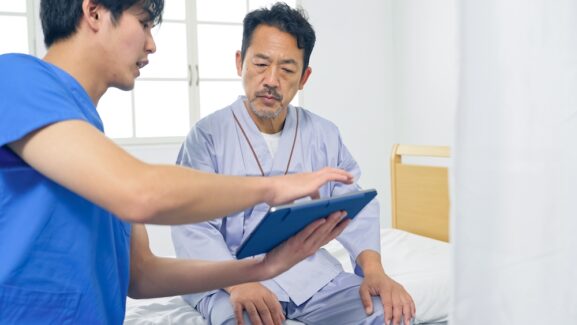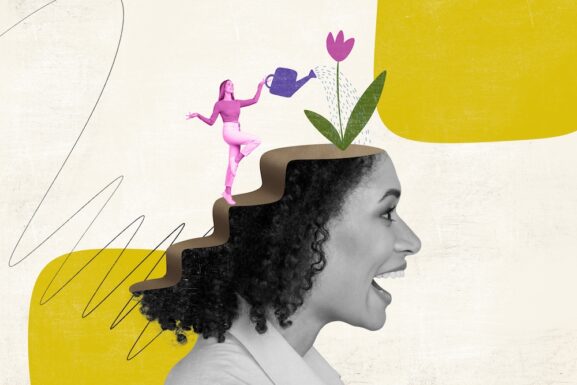Have Questions About Psilocybin-Assisted Therapy? Here are the Terms You Need to Know
Magic mushrooms are everywhere these days. Whether it’s titans of industry, athletes or moms, everyone is using psilocybin mushrooms to treat everything from depression and anxiety to PTSD and beyond.
The number of psilocbyin retreats around the globe has exploded and Oregon’s psilocybin retreat centers are just starting to open. In short, more and more people are seeking this new alternative mental health treatment. So what are some of the terms you need to know to help you navigate this new world? Here are some of the most important.
A Glossary of Psilocybin-Assisted Therapy Terms
5HT2A: The receptor in the brain primarily effected by psilocybin.
Aftercare: This is the phase following the psilocybin therapy session. It’s critical because the effects of psilocybin can be profound and disorienting. Aftercare includes activities and practices that help individuals process their experiences, such as journaling, counseling, and group sharing sessions.
Afterglow: A feeling of well-being after a medicine session.
Attachment style: Avoidant, disorganized, preoccupied–how clients relate to others is an important consideration in therapy. Therapy centers on the relationship of the client with the provider. The therapist should know the attachment style of the client–and their own attachment style.
Compass Pathways: The company bringing psilocybin-assisted therapy through the FDA approval process.
Contraindications: These are specific health conditions where psilocybin should not be used because it may be harmful. Healthcare providers may advise individuals with a personal or family history of psychotic disorders against psilocybin therapy. They may also caution those with certain medical conditions.
Container: The setting or structure in which psilocybin-assisted therapy takes place. Includes the physical space and the emotional or psychological support.
Default Mode Network: The pattern of brain activity at work during most of daily life. Psilocybin dampens this network, creating new pathways of mental activity.
Dosage: The dose can significantly influence the nature of the psilocybin experience. Healthcare providers carefully calibrate dosages according to the individual’s body weight, sensitivity to the substance, and therapeutic objectives.
Empathetic Abiding Presence: How therapists are instructed to act during a session. Offering a steady and reassuring demeanor–without directing or judging.
Entheogen: Due to their traditional use in spiritual and religious ceremonies to engender mystical or transcendental experiences, people often call psilocybin an entheogens. The word means “generating the divine within,” from the Greek words en (in) theo (divine) and gen (generate).
Eyeshades: Light-blockers clients wear so they can “go inward” and feel their feelings, without being distracted.
Facilitator: Facilitator is an umbrella word for anyone who cares for someone on psychedelics or leads a psychedelic session or ceremony. A facilitator guides and supports individuals through psychedelic experiences. Facilitators ensure the session’s safety and maintain a secure environment for the participant throughout the process.
Indication: The reason behind prescribing psilocybin-assisted therapy. Right now, Compass Pathways is looking into psilocybin-assisted therapy for depression.
Integration: Integration is a cornerstone of psilocybin therapy, where participants work to understand and apply the insights from their psychedelic experience in their everyday life. It often involves structured conversations with therapists or peers.
Intention Setting: Guides often help participants set clear intentions before a psilocybin session, which can shape the experience and focus the participants’ minds on specific areas of personal growth or healing.
Legality: The legal context for psilocybin varies by country and, in some places, by state or region. Where it’s legal, there are often strict regulations around its therapeutic use.
Microdosing: People often practice taking low doses of psilocybin. These doses are insufficient for a full psychedelic effect but reportedly boost creativity, energy, and emotional balance.
Meaning-making: After a session, it’s helpful for the client to frame or interpret their experience in a way that speaks to them. For example: “I saw bright warm visuals” can change to “there’s light at the end of the tunnel of my sadness.” The therapist should help the client make their own meaning–not interpret things for them.
Music: Plays an important role. Still and peaceful music can reassure and calm a client, especially during the come-up and come-down. On the other hand, evocative, dissonant or tense music can be provoking and heightening, steering the client toward a peak experience.
Noetic: A feeling that important truths have been revealed by psychedelics.
Parts work: A type of therapy, growing more popular among psilocybin-assisted therapists. A person is said to have different “parts” of themselves, like an “inner child,” “inner critic,” or “inner healer.” The therapist works with each part to bring healing.
Peak Experience: The most intense part of a journey, often full of colorful visuals and strong emotions.
Preparation Session: Before experiencing psilocybin therapy, individuals usually have one or more sessions with a facilitator to build rapport, establish trust, and discuss the process and any potential fears or concerns.
Psilocybin: Psilocybin is the psychoactive substance found in certain mushrooms. It can induce profound changes in perception, emotion, and cognition during a psychedelic experience.
Psychotherapy: Psychotherapists may use psychotherapy in conjunction with the psychedelic experience during psilocybin therapy. This helps individuals process and make sense of their experiences.

Psycholytic dose: A medium dose that doesn’t incapacitate; it “loosens” the psyche;–freeing the client to reach into their subconscious, while still being able to talk and do therapy.
Retreat: Structured programs, often set in serene, natural environments, provide participants with group psilocybin therapy sessions that frequently include a ceremonial aspect.
Screening: Potential participants undergo a screening process to ensure that psilocybin therapy is safe and appropriate for them. These screening processes take into account medical history, mental health, and other personal factors.
Self-care: How the therapist takes care of themselves during a medicine sessions, which can last from 6 to 12 hours. Includes taking breaks, eating snacks, drinking water, and stretching.
Set: This term refers to the internal attitudes, expectations, and psychological readiness of an individual prior to a psilocybin session, which can significantly affect the experience.
Setting: This involves the external environment where the psilocybin session takes place. A supportive, comfortable, and safe setting is vital for a positive therapeutic outcome.
Sitter: This is someone who stays with the participant during the psilocybin experience, offering support as needed.
Therapeutic Alliance: The relationship of trust and understanding between the therapist and client that is essential for effective therapy. A strong alliance can help clients feel safe enough to explore difficult psychological territory.
Transpersonal: Extending beyond the personal, especially in regard to the mystical or supernatural.
Trauma: A negative experience that damages a person’s ability to thrive in the world.
Trip: Although the term is common in recreational contexts to describe a psychedelic experience, therapists generally avoid it in clinical settings due to its informal and recreational connotations.
Tryptamine: The class of drug to which psilocybin belongs, a category that includes DMT and 5-Meo-DMT.
Unconditional Positive Regard: How therapists should treat their clients. Seeing them as human, valuable and worthwhile, regardless of their situation, values or beliefs.
Vulnerability Factors: These are individual traits or current life circumstances that might increase the likelihood of a negative reaction to psilocybin, such as acute life stressors or a history of trauma.



